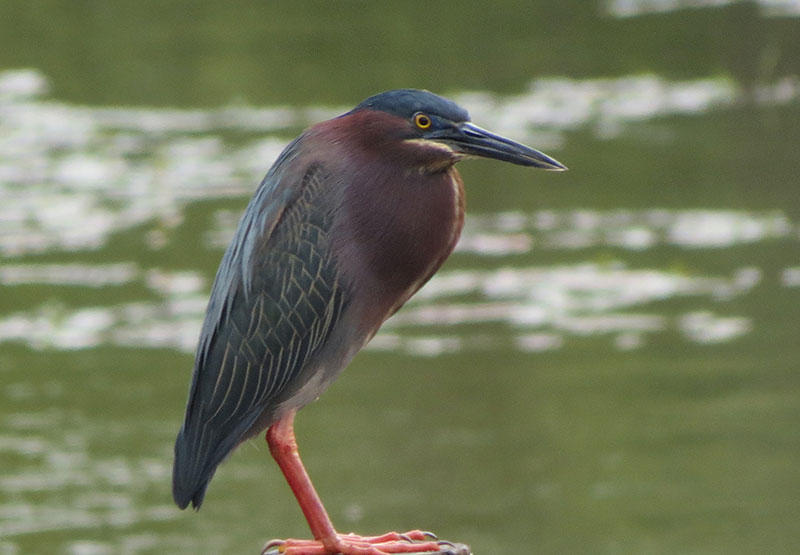Green Herons (Butorides virescens) are fascinating birds that inhabit wetland areas in the Americas.
Their small size and elusive nature make them a prized sight for birdwatchers as their greenish plumage helps them blend into their surroundings.
You may see one stalking or standing still at the water’s edge, patiently waiting, or even using bait to lure their prey.
On this page
Breeding Male
Male Green Herons have a slaty-green cap, back, wings, gray underparts, and chestnut-colored neck and breast. The center of their neck is streaked white. If you look closely, you can see some green tones in their plumage, too.
However, if there’s no direct sunlight or you’re looking at them from a distance, they can just appear dark-colored or a bit bluish. Their bills are long and dark, their eyes golden-yellow, and their long legs are orange.
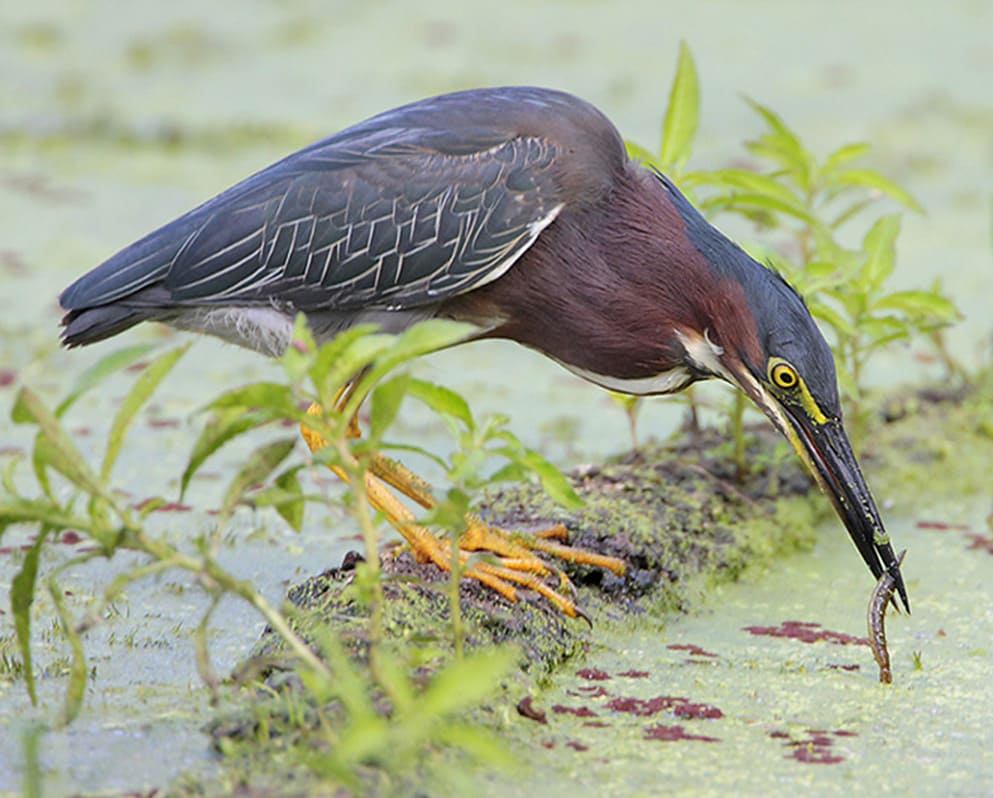
Photograph © Greg Lavaty.
Female
Female Green Herons look almost the same as males, but their plumage is duller and lighter, particularly during the breeding season. Females are also smaller in size.
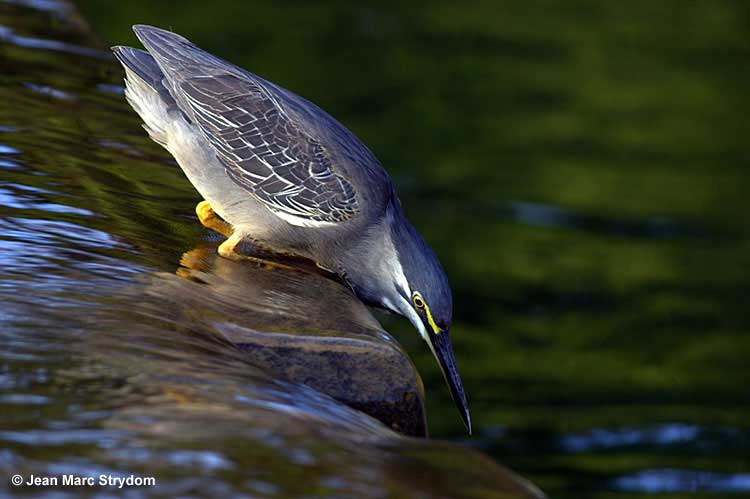
Juvenile
Green Herons lay 2-7, most commonly 3-5 pale green to bluish eggs in a clutch. Both parents take part in the 19-21-day incubation process and take care of and feed their offspring. The juveniles leave the nest at around 16-17 days after hatching and the parents take care of them for a few more weeks.
Juvenile Green Herons are browner, duller, and therefore more inconspicuous than adults. Their brown neck and chest are streaked with pale colors, and their dark back and wings have white and buff-colored spots. They have darker caps than adults do, and their legs are greenish instead of orange.
Green Herons’ size is similar to that of an American Crow. They grow to be around 16-18 inches long and weigh around 8.5 ounces.
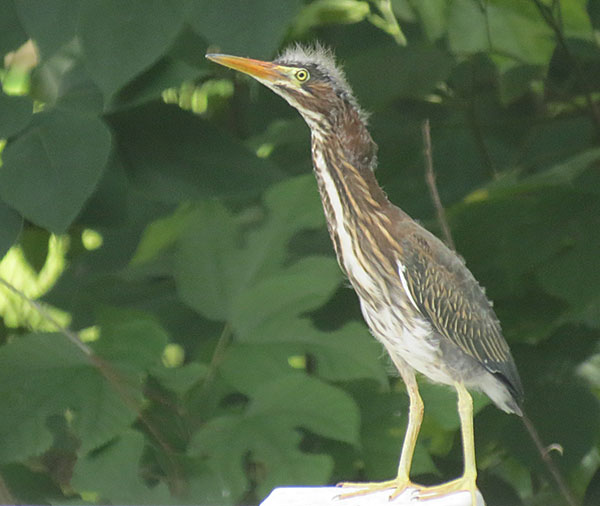
Juvenile Green Heron
Habitat
Green Herons can be found foraging in almost any aquatic habitat, be it fresh- or saltwater. However, they prefer smaller bodies of fresh water, such as lakes, marshes, ponds, and stream sides, especially those in wooded, shrubby, and vegetated areas.
Green Herons nest in pairs or small groups in wooded areas or swamp patches.
They build their nests quite close to water into a large fork in a shrub or a tree. Female builds it from thin sticks and the platform-shaped nest can vary from solid to flimsy.
Diet
Green Herons are carnivores that mainly prey on fish and invertebrates. Their specific diet depends on what is available.
They mainly eat small fish, such as sunfish, carp, perch, minnows, gobies, and eels. Other prey items include small rodents, lizards, amphibians, crustaceans, and snails. They also feast on invertebrates, such as aquatic insects, insects, spiders, and snails.
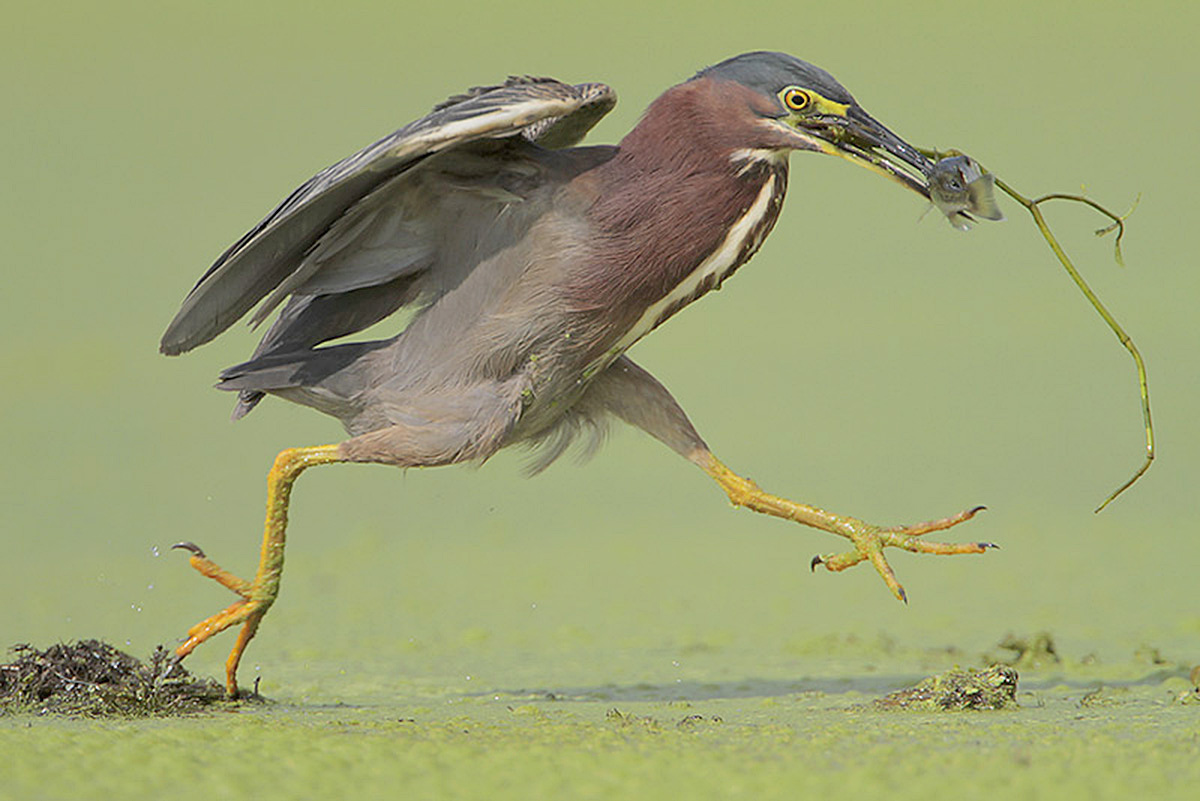
Photograph © Greg Lavaty.
These birds are patient hunters. They either stand still on solid ground or vegetation or walk very slowly in shallow water, waiting for the prey to approach them, luring them in by dropping something on the surface of the water.
When its prey is within striking distance, the Green Heron will lunge forward, extend its neck, and either grab or impale it with its bill.
Behavior
Green Herons are shy and rather solitary birds. They pair up for the breeding season and nest in solitary pairs, small groups, and, on rare occasions, colonies. The birds are territorial and will defend their nesting and foraging territories.
These birds are active during the day but may also hunt at night.
Range (and seasonal changes)
Green Herons range throughout Central America, the northern part of South America, and most of the United States. Their breeding range covers the eastern part of the United States and a small coastal strip in the Pacific Northwest.
In the winter, the birds migrate to Central America and as far as northern South America. They are year-round residents throughout most of Central and South America and the southernmost parts of the United States.
Green Herons are still fairly common, albeit hard to spot, and are listed as of least concern on the IUCN Red List. However, their population is in a decline with the main threat being the loss and destruction of habitat, human disturbance, and the use of pesticides.
Wing shape
Green Herons have an average wingspan of 26 inches. They keep their neck partially crooked, which makes them look a bit stocky.
Their wings are broad, long, and rounded wings which help them maneuver at low speeds. The slots between primaries improve that maneuverability even further.
They fly with deep and snappy wingbeats and their wings appear bowed when they’re flying.
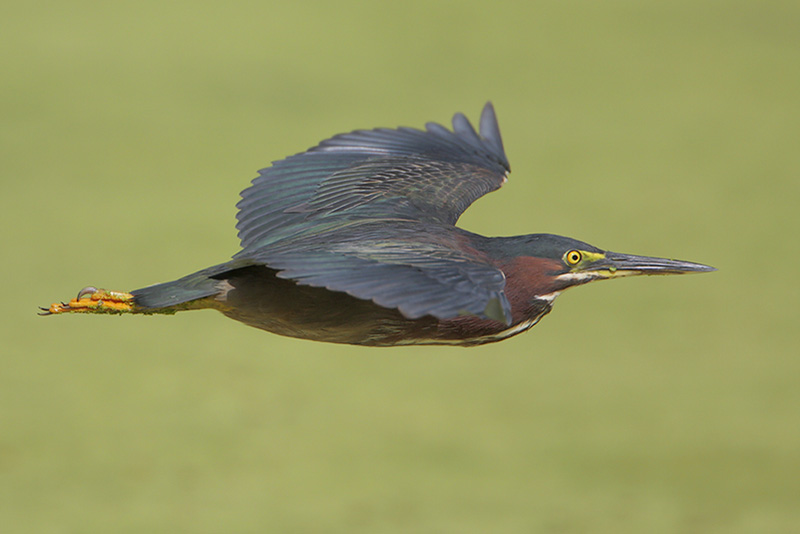
Green Heron in Flight
Fun Facts
- Green Herons are small and compact herons with green in their plumage, in some ways similar to Lava and Striated Herons. These three were previously believed to be a single species called the Green-backed Heron but are now usually treated as three allopatric species. Allopatric speciation is when populations of the same species become geographically isolated from each other so that they evolve differently and can’t reproduce with each other after some time.
- Green Herons occasionally dive or swim to catch prey.
- Green Herons have interesting hunting and eating habits. They will use bait to lure prey and will drown certain animals, such as frogs, before consuming them.
- The oldest known Green Heron was at least 8 years and 11 months old.
- Green Heron has a few subspecies, although some of them are heavily disputed. There are slight color variations between populations and migratory populations have longer wings than the resident populations.
Call
Green Herons have many different sounds and calls. They give quiet and growl-like calls, loud and explosive keow calls, raspy clucking-like kuk-kuk-kuk calls when disturbed while nesting, and screams when confronting predators.
Similar Species
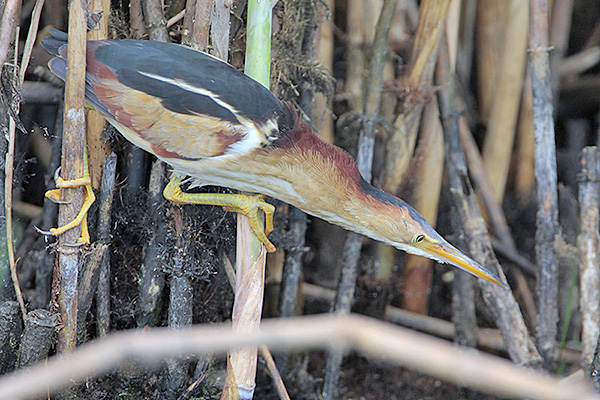
Photograph © Greg Lavaty
Similarly to Green Herons, Least Bitterns are part of the Ardeidae family. These two look similar, but there are still a few key differences.
First of all, Least Bitterns are smaller and have different plumage – Least Bitterns have a brownish-white stomach and wings. They have similar grayish backs,
Frequently Asked Questions
Why is a Green Heron called a Green Heron?
Green Heron got its name from the fact that its feathers have green iridescence and that its back and head may appear green with good light.
What’s the difference between a blue heron and a Green Heron?
Green Herons are smaller than Little Blue Herons and appear stockier. Little Blue Herons lack the green iridescence in their plumage, don’t have a dark cap, their bill is paler, and their legs are duller greenish, rather than orange.
Where do Green Herons live?
Green Herons prefer to live in quiet wetlands and other aquatic habitats that are surrounded by forests, shrubbery, or vegetation, such as ponds, lakes, streams, and marshes.
What is the call of Green Heron?
Green Herons have many different calls. The most common ones include the loud skeow call and a series of raspy kuk-kuk-kuk calls.

